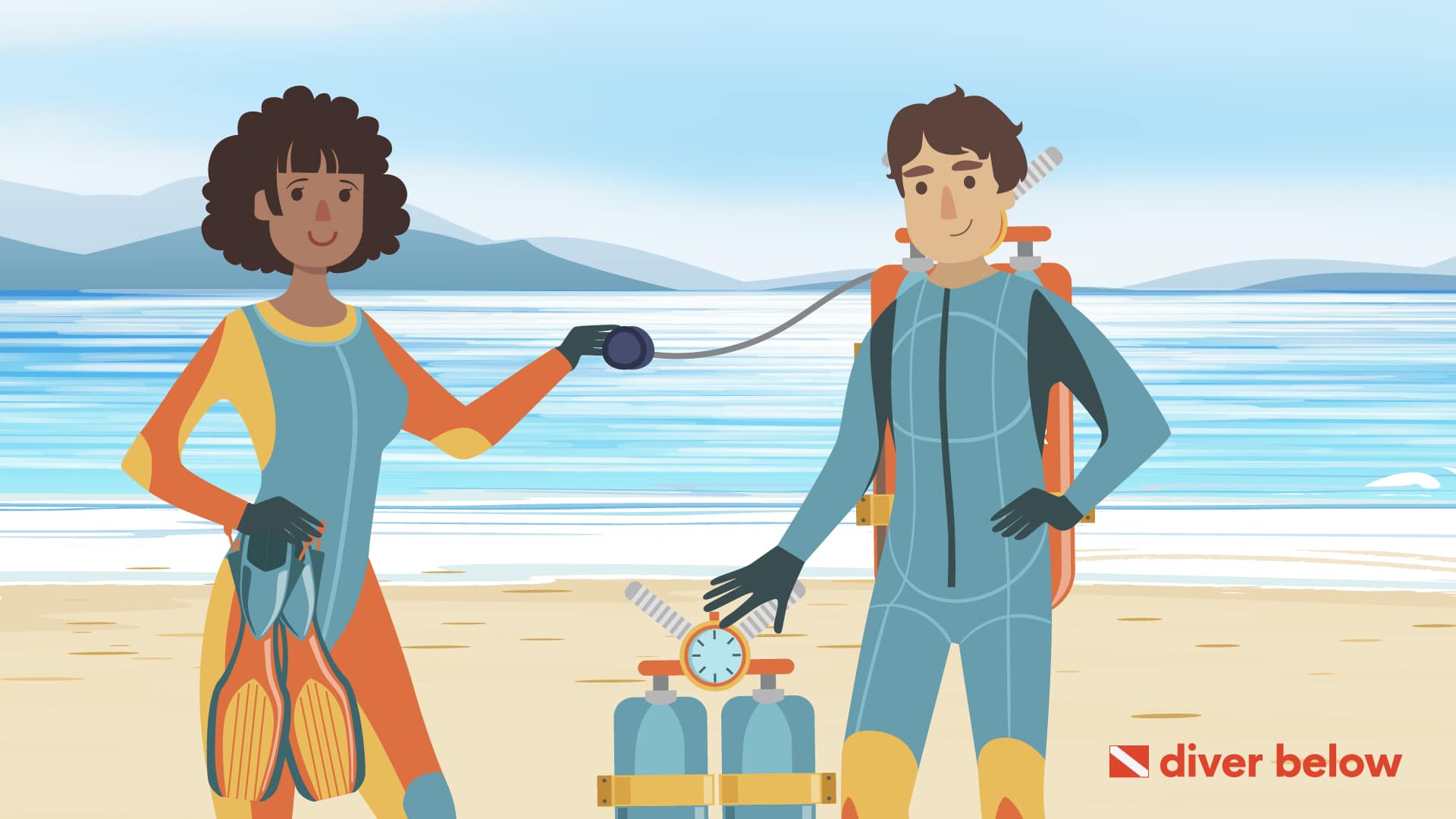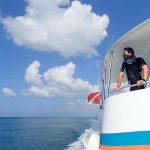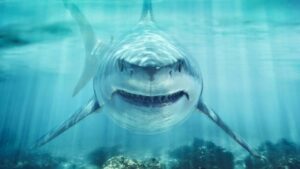Scuba diving allows you to enter an alien world of magic and mystery.
You can swim with the fish, explore coral reefs, and experience the ocean in a way most people never do.
That being said, diving into an airless environment comes with its risks.
These risks are why the buddy check system, or BWRAF, is so important.
Just as you prepare to drive your car each day, you always prepare yourself (and your buddy) to breathe underwater and explore the unexplored.
As one of the most critical but often overlooked aspects of diving, this is a lesson you don’t want to miss.
Contents
What Is a Buddy Check When Scuba Diving?
A buddy check is just as it sounds.
You check your partner’s diving equipment while your partner checks yours.
Better known as BWRAF, it is a system taught through the Professional Association of Diving Instructors (PADI).
BWRAF is taught to new divers as a way to avoid accidents.
It is not just new divers that should be using this system.
More experienced scuba pros should also perform the check, but they often choose not to.
Also called “Begin with Review and Friend,” you can use the buddy check with many different acronyms to help newbies remember the procedure.
Take a look at a few of our favorites:
- Blue Water Reeks After Farts
- Bruce Willis Rules All Films
- Be Wary Reefs Are Freaky
- Below Water Rats Are Frightened
- Breath While Resting Ain’t Fatigue
Regardless of how you decide to remember BWRAF, you must take the steps before diving in.
When Should You Perform a Buddy Check?
You should perform a buddy check every time you decide to swim below the waves.
Regardless of your skill, experience, where you are diving, or when, systematically checking your equipment is crucial to your safety.
[gw_video url=”https://www.youtube.com/watch?v=bainaBUEDbc”]
Accidents happen just as often to those with experience as it does to new divers.
Being conscientious about your equipment reduces the risk of issues occurring while you are submerged.
You should do the buddy check before you jump in.
This check is the last one to make sure everything is properly in place and working as it should.
If you are going out on a boat or traveling to a dock, make sure the first checks are done immediately.
This way, you will not be caught out at sea without the essential equipment you need.
You need to keep in mind your:
- Air-integrated computer system
- Straps
- Cylinder
- Reels
- Goggles
- Fins
You should bring any other essential gear with you as well.
What Does the Buddy Check Cover?
The buddy check, as we went over above, is the BWRAF check.
It stands for:
- BCD/Buoyancy
- Weights
- Release
- Air
- Final Review
All five steps are essential before each dive to avoid any problems.
Below, we will outline each step, along with some tips and things to avoid.
It will help you have the best diving experience without issues, problems, or potentially embarrassing situations.

1. BCD/Buoyancy
The first step is to check the buoyancy control device or BCD.
Make sure everything is connected and working in the right way.
You also want to look at the inflator button to ensure it is operable. All deflate valves should be looked at, as well.
It is crucial to check these pieces of your equipment so you don’t get tangled nor have straps in a position where they can block release valves.
Equally important, you need to check your partner’s low-pressure inflator hose (LPI) as each manufacturer makes them different.
You must become familiar with your and your buddy’s LPI in case of emergency.
A few commonly missed issues in this check include your straps covering the quick-release dump valve.
If this occurs, you might have trouble becoming buoyant in the want, and the BCD may not inflate.
2. Weights
Weights are essential while diving.
It is not only necessary to make sure you and your buddy’s weights are secure, but you also want to check they are in the correct spot and have the right amount of weight.
Pull lightly on the weights to see if they are attached correctly.
Furthermore, make sure you look at weight pockets, belts, and any other connected area.
You need to know where your and your partner’s weights are in case of an emergency.
If you need to get on the boat quickly, you need to release them in short order.
More than that, you also need to be able to remove your partners too.
Not all weights are made equal, so you need to familiarize yourself with yours and your buddy’s.
3. Releases
The releases on your equipment include all of the straps, belts, and other closures.
You need to make sure they are in their proper place, can be released without struggle, and that you know how to remove your diving buddy’s straps.
While completely dry, soak the webbing of your BCD.
This soaking allows the webbing to expand.
When you strap into it, you can fit it comfortably and securely.
Make sure you ask your partner to check the strap before getting into the water.
Losing your cylinder is very dangerous.
Making sure both tanks are secure is essential for a good dive.
4. Air
The next step in the buddy check is making sure your air supply is working correctly.
To do so, you want to take a few solid breaths using either a submersible pressure gauge or an air-integrated computer.
Checking your air supply in such a way allows you to:
- Ensure the valve is fully open
- Checks the amount of air available
- Ensures your air monitoring is working right
- It lets you check the taste of your air
Additionally, check your backup air supply.
For obvious reasons, the air that you and your buddy receive when underwater is essential.
Unfortunately, it is often not done correctly.
A closed cylinder can give the impression it is full of air when it is not.
During this portion of the buddy check, inspect your primary air source while your partner checks your backup.
Repeat the process by switching places.
5. Final Check
The final check is a rundown of all your equipment, straps, and cylinder.
You want to run down the buddy checklist with your dive partner to make sure:
- Nothing was forgotten onshore or back home
- Your valve is open
- All equipment is fitted correctly
- You have plenty of air for the dive
Doing this final check will let your team member, dive leader, and boat captain know that you are both ready to go.
If anything is missing or not operating correctly, it is best to sit out the dive.
That being said, you don’t want to be the diver who has misplaced their SPG or doesn’t have their reel.
It’s not only embarrassing but often an inconvenience to other divers.
To avoid all of this, do the buddy check right away.
You can do it on the dock before you get on the boat.
However, always do the final review before getting in the water.
Wrapping Up
The buddy check system is an important lesson to learn for beginners.
The buddy check is essential for all divers at all times.
Taking the time to complete thes simple tasks before you dive can save your life and possibly save the life of your diving partner as well.





